Hyundai Kona vs Toyota Supra – Differences & prices compared
Compare performance, boot space, consumption and price in one view.
Find out now: which car is the better choice for you – Hyundai Kona or Toyota Supra?
The Hyundai Kona (SUV) comes with a Electric, Petrol or Full Hybrid engine and Automatic or Manuel transmission. In comparison, the Toyota Supra (Coupe) features a Petrol engine with Automatic or Manuel transmission.
When it comes to boot capacity, the Hyundai Kona offers 466 L, while the Toyota Supra provides 290 L – depending on how much space you need. If you’re looking for more power, decide whether the 218 HP of the Hyundai Kona or the 441 HP of the Toyota Supra suits your needs better.
In terms of consumption, the values are 14.60 kWh4.60 L per 100 km for the Hyundai Kona, and 7.10 L for the Toyota Supra.
Price-wise, the Hyundai Kona starts at 23100 £, while the Toyota Supra is available from 54200 £. Compare all the details and find out which model fits your lifestyle best!
Hyundai Kona
The Hyundai Kona blends a bold design with a versatile interior, making it a standout choice in the compact SUV market. Its crisp handling and responsive steering provide an engaging driving experience, whether in the city or on the open road. The vehicle also offers a range of features designed to enhance comfort and connectivity, ensuring a pleasurable journey for both driver and passengers.
details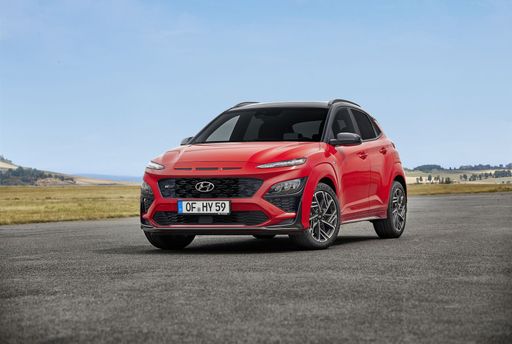 @ hyundai.news
@ hyundai.news
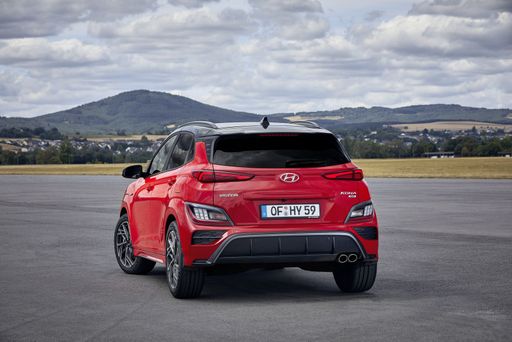 @ hyundai.news
@ hyundai.news
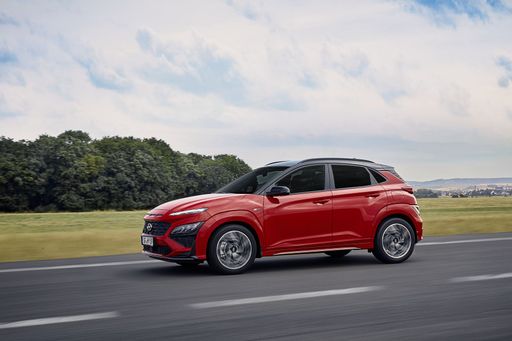 @ hyundai.news
@ hyundai.news
 @ hyundai.news
@ hyundai.news
Toyota Supra
The Toyota Supra stands as an iconic symbol in the world of sports cars, blending striking aesthetics with performance. Its sleek design and elegant curves capture attention, while the finely tuned engine offers an exhilarating driving experience. Inside, the driver-focused cockpit combines luxury with cutting-edge technology, ensuring both comfort and excitement on the road.
details @ toyota-media.de
@ toyota-media.de
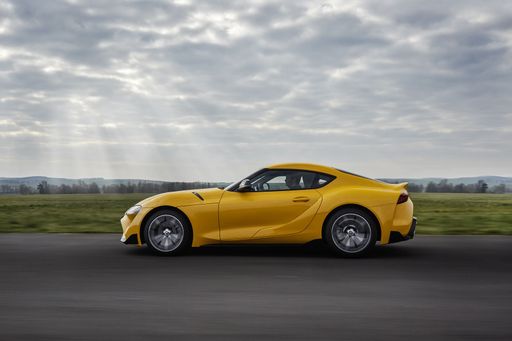 @ toyota-media.de
@ toyota-media.de
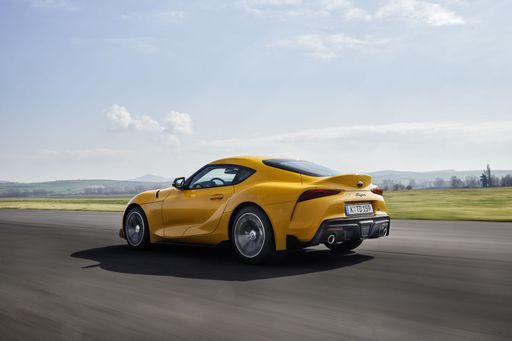 @ toyota-media.de
@ toyota-media.de

|

|
|
|
|
Costs and Consumption |
|
|---|---|
|
Price
23100 - 41600 £
|
Price
54200 - 122400 £
|
|
Consumption L/100km
4.6 - 7 L
|
Consumption L/100km
7.1 - 9 L
|
|
Consumption kWh/100km
14.6 - 16.8 kWh
|
Consumption kWh/100km
-
|
|
Electric Range
377 - 514 km
|
Electric Range
-
|
|
Battery Capacity
1.3 - 65.4 kWh
|
Battery Capacity
-
|
|
co2
0 - 163 g/km
|
co2
161 - 204 g/km
|
|
Fuel tank capacity
38 - 47 L
|
Fuel tank capacity
52 L
|
Dimensions and Body |
|
|---|---|
|
Body Type
SUV
|
Body Type
Coupe
|
|
Seats
5
|
Seats
2
|
|
Doors
5
|
Doors
3
|
|
Curb weight
1370 - 1773 kg
|
Curb weight
1395 - 1580 kg
|
|
Trunk capacity
466 L
|
Trunk capacity
290 L
|
|
Length
4350 - 4385 mm
|
Length
4379 mm
|
|
Width
1825 mm
|
Width
1854 - 1867 mm
|
|
Height
1580 - 1585 mm
|
Height
1276 - 1292 mm
|
|
Payload
420 - 490 kg
|
Payload
215 - 315 kg
|
Engine and Performance |
|
|---|---|
|
Engine Type
Electric, Petrol, Full Hybrid
|
Engine Type
Petrol
|
|
Transmission
Automatic, Manuel
|
Transmission
Automatic, Manuel
|
|
Transmission Detail
Manual Gearbox, Dual-Clutch Automatic
|
Transmission Detail
Automatic Gearbox, Manual Gearbox
|
|
Drive Type
Front-Wheel Drive, All-Wheel Drive
|
Drive Type
Rear-Wheel Drive
|
|
Power HP
115 - 218 HP
|
Power HP
258 - 441 HP
|
|
Acceleration 0-100km/h
7.8 - 11.9 s
|
Acceleration 0-100km/h
4.3 - 5.2 s
|
|
Max Speed
162 - 210 km/h
|
Max Speed
250 - 275 km/h
|
|
Torque
200 - 265 Nm
|
Torque
400 - 500 Nm
|
|
Number of Cylinders
3 - 4
|
Number of Cylinders
4 - 6
|
|
Power kW
85 - 160 kW
|
Power kW
190 - 324 kW
|
|
Engine capacity
998 - 1598 cm3
|
Engine capacity
1998 - 2998 cm3
|
General |
|
|---|---|
|
Model Year
2024 - 2025
|
Model Year
2024 - 2025
|
|
CO2 Efficiency Class
A, D, C, E, F
|
CO2 Efficiency Class
F, G
|
|
Brand
Hyundai
|
Brand
Toyota
|
Hyundai Kona
The Hyundai Kona: A Comprehensive Overview
The Hyundai Kona has established itself as a standout in the compact SUV segment, blending innovation with performance and style. As the automotive world moves towards more sustainable and efficient options, the Kona offers a variety of powertrains, from traditional petrol engines to full hybrids and all-electric models.
Powertrain Options and Performance
The Hyundai Kona's powertrain choices cater to a wide range of preferences. For petrol enthusiasts, the Kona offers a 1.0L T-GDI engine, delivering 100 PS, and a more robust 1.6L T-GDI variant with up to 170 PS. Those looking for efficiency without sacrificing power can consider the full hybrid model, offering 129 PS and an impressive consumption of 4.5 L/100km.
For a greener option, the all-electric Kona provides a compelling case. With battery capacities of up to 65.4 kWh, the electric Kona offers power outputs of 156 to 218 PS, and efficiencies as low as 14.6 kWh/100km, enabling an electric range of up to 513 km.
Technical Specifications and Innovations
Built on a robust platform, the Kona delivers versatility and reliability. With a choice between manual or dual-clutch automatic gearboxes, along with options for front-wheel or all-wheel drive, the Kona ensures a tailored driving experience. The handling is enhanced by the car's lightweight construction, balancing a 1370 to 1773 kg curb weight with dynamic performance.
The Kona's design doesn't compromise cargo space for style; it offers a generous 466 L boot capacity. With a relatively compact body, measuring 4350 to 4385 mm in length, the Kona easily navigates urban environments while still commanding a strong road presence with its 1825 mm width.
Efficiency and Eco-Friendliness
Hyundai is committed to reducing emissions, as evidenced by the Kona's CO2 efficiency ratings, which range from class A for electric models to class D for some higher-performance petrol variants. The focus on reducing environmental impact without sacrificing driving pleasure is notable throughout the Kona range.
Costing and Value
The Hyundai Kona offers commendable value for money. Pricing starts at €26,400 and reaches up to €50,690, depending on the chosen configuration. The monthly running costs range from €956 to €1090, with a cost per kilometre of 38.3 to 43.6 cents, making it a competitive option in its class.
Conclusion: Modern, Efficient, and Versatile
The Hyundai Kona stands as a testament to Hyundai's commitment to innovation, efficiency, and practicality. Whether you are inclined towards a traditional combustion engine, a hybrid for a balance of power and efficiency, or a full electric model for maximum eco-friendliness, the Kona provides a tailored solution for each unique driver preference.
Toyota Supra
A Revitalised Icon: The Toyota Supra
The Toyota Supra has been a byword for performance and style since its inception. In its latest iteration, the Supra continues to captivate automotive enthusiasts with its blend of heritage and modern innovation. With a stunning profile and state-of-the-art engineering, the Toyota Supra is more than just a sports car; it’s a testament to Toyota’s commitment to excellence.
Engineering Excellence Under the Hood
At the heart of the Toyota Supra lies a sophisticated 2.0-litre turbocharged four-cylinder engine. This power unit, with a displacement of 1998 cm3, provides a thrilling 258 PS (190 kW) and an impressive torque output of 400 Nm. Such output doesn’t come at the cost of efficiency, as the Supra’s fuel consumption stands at an economical 7.1 L/100 km, supported by an automatic transmission that emphasises smooth power delivery and driving comfort.
Driving Dynamics and Performance
Driving the Toyota Supra is an experience defined by precision and agility. With an acceleration from 0 to 100 km/h in just 5.2 seconds and a maximum speed of 250 km/h, the Supra emboldens its driver with confidence. The rear-wheel-drive layout provides dynamic prowess, ensuring a well-balanced and responsive performance on both straight roads and winding tracks.
Design: A Nod to Tradition with Modern Flair
The design of the Toyota Supra is a harmonious blend of old and new. Its coupe silhouette is characterised by sleek lines and an assertive stance, true to its sports car roots. Measuring 4379 mm in length, 1854 mm in width, and 1292 mm in height, the Supra asserts itself with a compact yet muscular profile. The bold aesthetics are complemented by innovative features that emphasise aerodynamics and driving stability.
Safety and Technological Innovations
Toyota embeds cutting-edge technology within the Supra to enhance driver and passenger safety. Modern connectivity options, driver-assistance systems, and a CO2 efficiency class of F reflect Toyota’s dedication to integrating technology without compromising performance. The Supra’s technologically advanced cockpit connects seamlessly with today’s demand for a digitally proficient driving environment.
Comfort and Practicality
Despite its focus on performance, the Toyota Supra does not neglect practicality. Offering a surprisingly spacious 290 litres of boot space and a tank size of 52 litres, it accommodates both the need for speed and everyday usability. The interior craftsmanship prioritises comfort, ensuring that the Supra remains a suitable companion for both the daily commute and longer escapades.
Conclusion: An Icon Reimagined for the Future
The Toyota Supra stands out not only as a reborn icon but as a forward-thinking sports car that embodies Toyota’s innovative spirit. With a range of options such as the Dynamic Automatik and Pure Automatik trims, the Supra offers tailored experiences for its discerning audience. Ultimately, this modern legend continues to inspire car lovers, representing a perfect harmony of heritage and innovation.
What drive types are available for the Hyundai Kona?
Available configurations include Front-Wheel Drive or All-Wheel Drive.
The prices and data displayed are estimates based on German list prices and may vary by country. This information is not legally binding.
